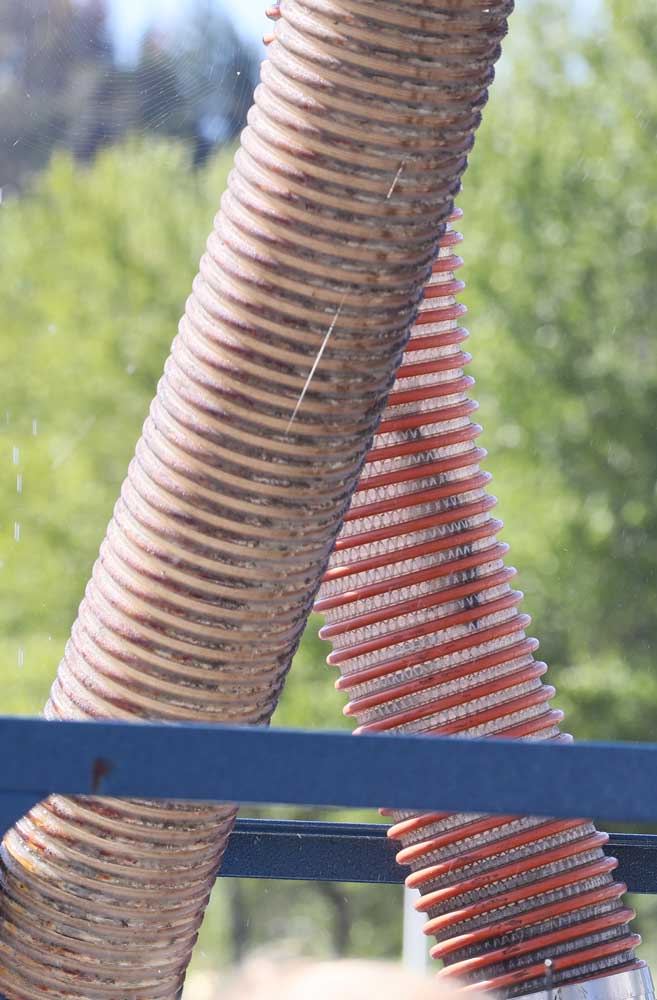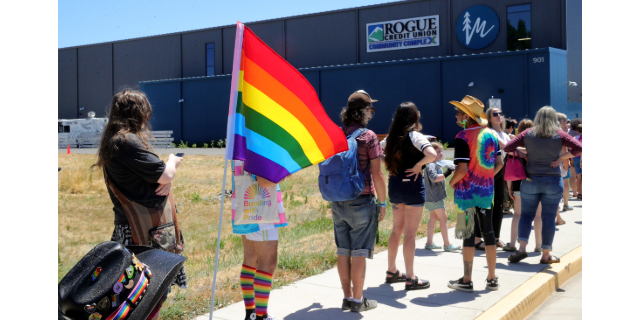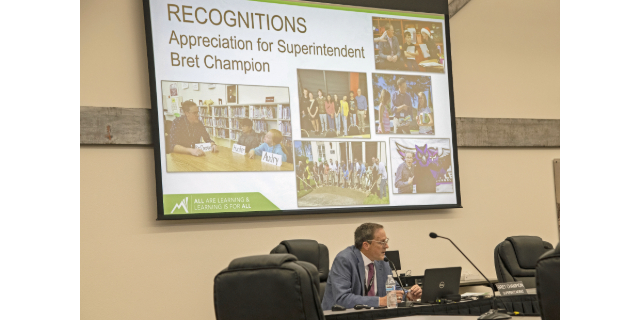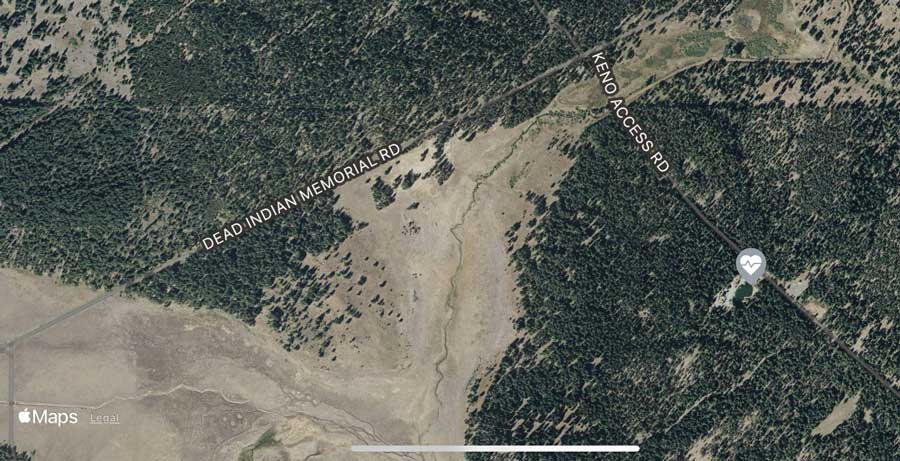Trout delivery time: ‘Like an ice cream truck for adults’
Published 8:15 am Saturday, May 13, 2023

- Rainbow trout are sucked through a hose into a truck at Cole River Fish Hatchery.
After filling her tanker truck with rainbow trout Wednesday at the Cole M. Rivers Hatchery in Trail, Lesa McLain prepared to drive off to deliver them to Fish Lake near Mount McLoughlin.
When she pulls into the drop site with her finned cargo, she’s likely to get a welcome reception from onlookers.
“When you deliver fish, it’s almost like an ice cream truck for adults,” said McLain, a longtime fish and wildlife technician with the Oregon Department of Fish and Wildlife. “Usually, people are literally waiting for us.”
“You always have people who are happy to see you, especially the kids.”
And, sometimes, you have crabby people, too.
“Either we don’t have enough fish or the fish are too small,” McLain said, explaining the attitude of some. “You’ve got to take the good with the bad.”
Such is life at the hatchery and at the lakes, ponds and river it stocks. This time of year, trout stocking is in full swing.
McLain has worked for more than three decades for ODFW, which operates the hatchery under a contract with the U.S. Army Corps of Engineers. The facility is about 30 miles northeast of Medford, just below the William L. Jess Dam at Lost Creek Lake.
Mitch Semrow, a foreman at the hatchery, said the arrival of trucked-in fish at a waterway can turn a poor day of fishing into a good one, especially for a young person.
“That could leave a long-lasting impression,” he said.
That’s one of the reasons Oregon stocks its waterways with trout, salmon and steelhead: The practice honors tradition, families, communities, culture and economies.
In addition to loading 500 one-pound trout, which are about 12-14 inches long, McLain took on 4,500 “legal” trout, which are about 8-10 inches long. A second truck loaded 3,800 trout before heading to Hyatt Lake, also in the high country.
In all, a half-dozen lakes and ponds were stocked this week with hatchery trout. Trout stocking in southwest Oregon takes place from mid-February until the end of October, but now is the busy season.
“Probably our busiest time is March through May,” Semrow said.
Early this past week, hatchery trout were stocked at Medco Pond near Butte Falls and Lake Selmac near Selma. Late in the week, Lost Creek Lake and Burma Pond near Wolf Creek were scheduled for stocking.
More than a dozen waterways in the Rogue River Basin get stocked, including the Rogue River above Lost Creek Lake, which is stocked weekly from roughly Memorial Day to Labor Day. ODFW posts a stocking schedule online.
“The trout stocking program is all about providing fish for anglers to catch and bring home for a nice meal,” said Dan Van Dyke, a fish biologist with the department. “May is a great time of year to go trout fishing. The fish are active and distributed all around lakes, making the trout easier to catch. And fishing is a great reason to get outdoors, enjoy some spring weather, watch for wildlife and listen for different bird species. It’s a wonderful family experience.”
Trout stocking in the Rogue River Basin primarily is a springtime activity, according to Van Dyke.
“During summer, water temperatures at most Rogue lakes are too warm to safely stock trout,” he said.
Van Dyke, who directs where and when stocking takes place, said Fish, Hyatt, Howard Prairie and Emigrant lakes are irrigation district reservoirs that depend on snowmelt to fill.
“The good snowpack is helping water levels this year, which is an exciting development,” he said. “Hyatt has not been stocked since May 2021, so 2023 will bring some good news for Hyatt anglers.”
Also stocked in Jackson County are Applegate Lake, Expo Pond and Willow Lake, as well as Lake of the Woods in Klamath County.
Trout must be at least 8 inches in length to be legal for harvest, and up to five trout may be harvested per day. Only one trout over 20 inches in length may be taken per day.
An estimated 345,650 trout are expected to be released by the hatchery this year, including 20,100 pounders and 11,200 larger trophy fish. The pounders get released from March to June, while the trophy fish are scheduled for release in September and October. Trout stay up to two years in the hatchery prior to release. The goal this year is to release almost 4.3 million fish, including salmon and steelhead, according to Semrow.
A routine is followed prior to loading fish onto a truck. The large tank holding the fish is cleaned, and the fish are deprived of food for at least a day to reduce poop and spitting up. Also, the level of water in the tank is dropped, to acclimate the fish to crowding. The tank is about 20 feet wide and 100 feet long and open to the elements except for overhead screening. The hatchery has dozens of them.
The fish get checked by a pathologist prior to loading. Their journey will be an ordeal.
“Any time you handle fish, they get stressed,” Semrow said.
On loading day, technicians down in the bottom of the tank use wide screens to herd the fish in shallow water toward a large suction hose that extends below the water line. A pump provides the suction, taking up water and fish to a high platform, where the fish slide down another tube to the truck’s tank.
The number of fish taken aboard can be estimated based on weight: three smaller “legal” fish roughly equal a pound total, while a pounder equals, well, about a pound.
The fish are then trucked to a waterway, where the tanker backs down a ramp into shallow water to release its cargo in a gush of water flowing from a valve.
The hatchery, 50 years old this year, serves to make up for the blockage of the adjacent Rogue River caused by the dam, a flood-control project that created Lost Creek Lake. ODFW employs 15 full-time workers and two part-time workers to run the hatchery. Volunteers assist, too.
McLain, the truck driver, started her career at the hatchery more than 30 years ago. Her job duties also include cleaning tanks, feeding fish, dealing with the public and maintaining records. About 85% of the work is outdoors.
“I didn’t realize I was going to stay here this long,” said McLain, who lives in nearby Trail. “I love it. I really love my job.”
“Every day, you learn something. There’s always something different.”
The technicians individually can have responsibility for a particular group of fish. After raising them, it can be something of a moment when the fish are hauled off.
“They leave the nest,” McLain said.
McLain’s co-worker and best friend, Bryan DeBerry, described the parting as “a little tear, a little feel good inside.”
“The families are waiting for fish,” DeBerry said. “It’s really rewarding to watch the kids go crazy when they see the fish coming off the truck.”
DeBerry’s father, Lee, retired last year after working 36 years at the hatchery, where the family lived on-site. DeBerry was raised there — “a hatchery brat” — and began work there full time in 1997.
“The blessing was truly working with my father,” he said. “And all these fish and co-workers …”
Visiting the hatchery on Wednesday were Sondra and Frank Baize of Medford, who have been regulars there since the 1960s.
“Our kids come here and now our grandkids,” she said. “We absolutely love it. It’s real educational for the kids. It opens their eyes.”
The hatchery probably helped spur their interest in fishing, she figures.
Their grandson, 24, is an avid fisherman.
“He is such a fisherman,” she said. “He loves to fish.”
“My daughter, she’s 45, and she loves to fish.”
If you go
The Cole M. Rivers Hatchery is open to visitors every day of the year, though offices are open typically only on weekdays, from 7:30 a.m. to 4:30 p.m.
Visitors might want to stop at a viewing platform that overlooks the holding tanks or visit show fish held in tanks outside the office’s main entrance.
The William L. Jess Dam, holding back Lost Creek Lake, is just upriver of the hatchery, as are riverside day-use areas. Water flowing out of the dam forms the Rogue River, which flows by the hatchery.
To get there from Medford, take Highway 62 to milepost 29 at Casey State Park and turn left on Takelma Drive. Proceed about a half mile, driving past the Lost Creek Lake Visitor Center and turn right onto Cole M. Rivers Drive. Follow the road across the Rogue River to the hatchery.
The hatchery is located at 200 Cole M. Rivers Drive. Call 541-878-2235 for more information.
More information about fish and fish stocking, including a stocking schedule, is available online, at myodfw.com.







